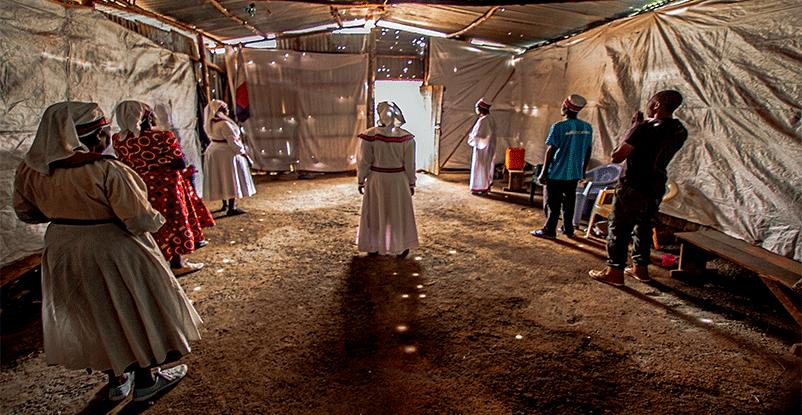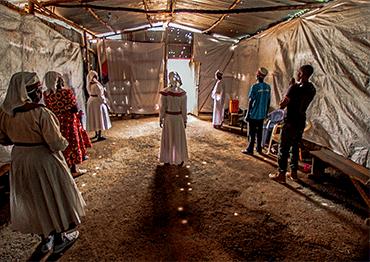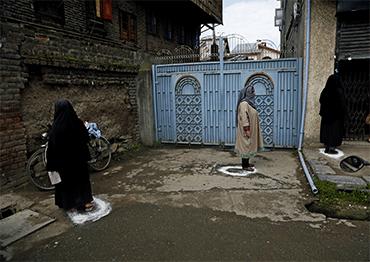Since April, the Dharavi slum in Mumbai, India has been unusually still. Military police officers blocked the entrance and epidemic prevention personnel disinfect the empty streets regularly. As of April 7, there were three confirmed cases, including two deaths.
In many developing countries, slums and poor communities have large population concentrations with weak health infrastructure. Some even lack clean water. In others, authorities struggle to push basic practices such as frequent hand washing. Also, malnutrition is common in these areas, which further increases risk of disease.
Nineteen countries reported more than 100 deaths between March 29 and April 5. The increase is leaving many developing countries in limbo, particularly those with weak public health systems. In India, there are only 1.31 beds per 1,000 people, far below many developed countries.
Conditions are even worse in some African nations. A Chinese doctor who has served on medical missions to Africa told NewsChina that Zanzibar has no ICUs, ventilators and negative pressure isolation rooms. Its largest hospital is smaller than most county hospitals in China. “We brought all our medical supplies from China when we worked in Zanzibar,” he said.
Public health spending per capita in most African countries is less than US$20 each year, far below the US$34-40 set by the WHO. African medical workers account for 1.3 percent of the world total, but they handle 25 percent of disease treatment globally. On thecontinent, 13 countries met the WHO’s minimum standards - one hospital per 100,000 people.
Since the global spread, community-centered isolation has been the only anti-epidemic method available to many developing countries. On March 24, India declared a 21-day “complete lockdown” to stop the coronavirus which was extended to May 3. Meanwhile, many countries in Africa announced a state of emergency: 53 countries closed schools and canceled public activities and 43 countries closed their borders.
Sara Nieuwoudt said public trust in the health system is critically important and wealth does not automatically translate to effective responses if key influencers, such as religious leaders, are not part of the response.
“We have seen this in countries like Nigeria, where religious leaders have actively worked against polio vaccination campaigns. The same could happen with coronavirus responses unless such individuals are involved in promoting public health,” she said.
In countries with inadequate medical resources, lockdowns are double-edged swords. Lagos, the biggest city in Nigeria with a population of 20 million, has strictly controlled transportation and population flows since the outbreak of Ebola, successfully preventing its spread. In some cities far from the capital, however, isolation measures have resulted in rapid depletion of medical resources and growing death tolls.
A United Nations report in 2015 stated that during the latter periods of Ebola, lockdown measures in some western African countries resulted in high school dropout rates, pregnancy and maltreatment. The Tanzania government recently announced that if it implemented a complete lockdown, many would starve to death.

 Old Version
Old Version

